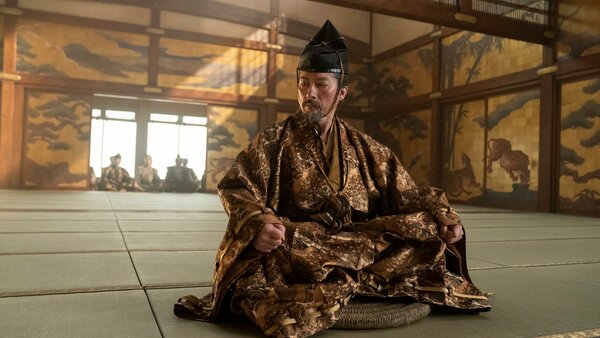Shōgun Review: 11 Ups & 2 Downs
This new adaptation of James Clavell's seminal novel is a rare TV masterpiece.

In 1975, seminal author and screenwriter James Clavell published the third novel in the Asian Saga (and first chronologically), Shōgun, which became a trailblazing bestseller worldwide, and later spawned a 1980 miniseries which to date remains the second-most viewed limited series ever aired after Roots.
The 1980 original was a grand endeavour, full of bold cinematic choices and historical insight rarely captured on network television. Like the novel, it told the story of a shipwrecked Englishman called John Blackthorne, who finds war, a hint of romance, and sabotage on Japanese shores during the early 17th century.
This year, after years in development hell, Shōgun has emerged again, reworked by husband/wife team Rachel Kondo and Justin Marks to even more startling effect than what came before. It's larger in scope, aided by modern CGI and filming techniques, but it also gives the story more focus, more character, more subversion than the original show.
Starring Hiroyuki Sanada as a scheming warlord seeking power alongside Cosmo Jarvis as Blackthorne and Anna Sawai as the embattled Lady Mariko, this new rendition of Clavell's novel is a vital piece of historical drama, not only because of its historical significance, but because of how ably it tells its twisting, slow burn story.
With betrayal, violence, love, heartbreak and gorgeously composed images, here are 11 Ups & 2 Downs from the masterpiece that is Shōgun. This review will be spoiler-free.
13. Down: It's Far Too Short

Whilst it's easy to say this about any great show that's struck a chord with its audience, it's not quite reductive to say Shōgun is simply too short. Well, perhaps "too short" is the wrong phrase: Over its ten-hour run, the FX drama tells its story flawlessly, with the pace of a studied procedural wasting not a lingering image nor line of dialogue. It is, in fact, the perfect length.
The problem, then, is that it's a miniseries; these ten episodes are all we're getting, and the showrunners have all but guaranteed the prospect of another chapter or two is off the table.
This is fine - more shows should probably quit whilst they're ahead, to be honest - but considering the scope of the series, and the amount of story left to tell about early Japanese history, it's easy to see Shōgun running for many more years to come, especially since there are five more novels in Clavell's Asian Saga.
A minor gripe, but one worth mentioning. The lost potential here feels damn near limitless.